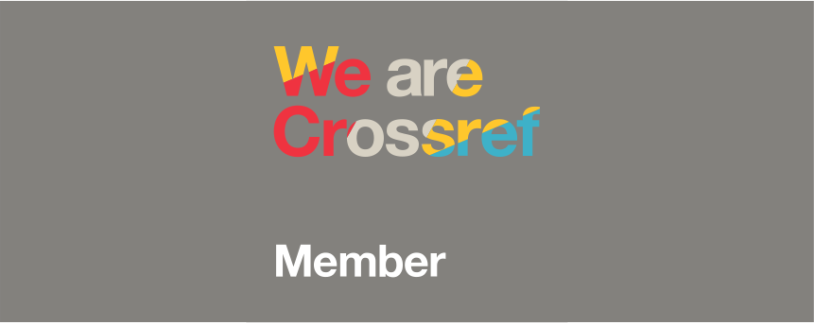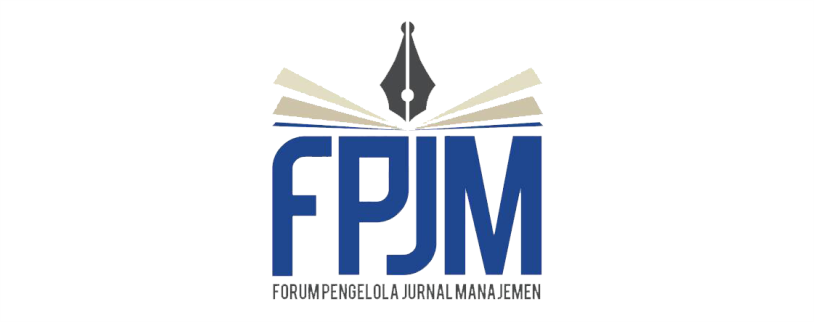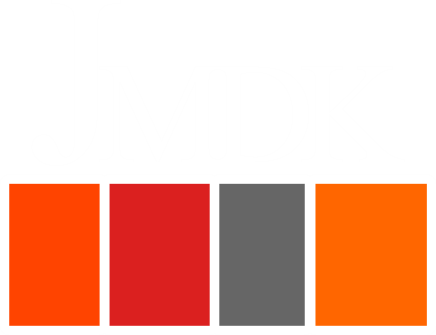Work from Home Proclivity: A Year into Covid-19 Pandemic
DOI:
https://doi.org/10.26905/jmdk.v9i2.6274Keywords:
Job Requirements, Task Management, Working Conditions, Work from Home, Work Related Stress,Abstract
All forms of formal education were abruptly shifted into online-learning when Covid-19 hit globally. This unexpected change has forced education practitioners to adapt and conduct their work remotely in order to minimize the virus spread. However, sudden changes are seldom arduous and work from home came with its many challenges. This research seeks to examine the working conditions and job requirements, the time and task management, work related stress, performance at work lecturer’s experience during online-learning and their inclination towards work from home in the future. This research is an exploratory study and the data is analyzed with a statistic descriptive method to describe the phenomenon. Using online questionnaire, a total of 120 lecturers responded. The study discovers that lecturers find the conditions of work from home to be acceptable, they are able to organize their task and time to some extent, and it does not affect their work performance and does not have a negative impact on their stress level. In the future, the lecturers will feel neutral about work from home after the pandemic subsidence. More are leaning towards going back to work in office settings, but open to do hybrid-working, which is a combination of work from office and work from home.
Downloads
References
Aczel, B., Kovacs, M., Van Der Lippe, T., & Szaszi, B. (2021). Researchers working from home: Benefits and challenges. PLoS ONE, 16(3 March), 1–9. https://doi.org/10.1371/journal.pone.0249127
Belzunegui-Eraso, A., & Erro-Garcés, A. (2020). Teleworking in the context of the Covid-19 crisis. Sustainability (Switzerland), 12(9), 1–18. https://doi.org/10.3390/su12093662
Bloom, N. (2014). T A Significant Improvement in Performance. (February). Retrieved from https://stayinthegame.net/wp-content/uploads/2019/07/HBR-To-Raise-Productivity-Let-More-Employees-Work from home.pdf
Delanoeije, J., Verbruggen, M., & Germeys, L. (2019). Boundary role transitions: A day-to-day approach to explain the effects of home-based telework on work-to-home conflict and home-to-work conflict. Human Relations, 72(12), 1843–1868. https://doi.org/10.1177/0018726718823071
Dizaho, E. kadarko, Salleh, R., & Abdullah, A. (2017). Achieveing work life balance through flexible work schedules and arrangements. Global Business & Management Research, 9(1), 455–465. Retrieved from http://search.ebscohost.com/login.aspx?direct=true&AuthType=shib&db=bth&AN=122717287&site=eds-live&scope=site&custid=uphoenix
Faulds, D. J., & Raju, P. S. (2021). The Work from home Trend: An Interview with Brian Kropp. Business Horizons, 64, 29–35. https://doi.org/https://doi.org/10.1016/j.bushor.2020.10.005
Gurstein, P. (2001). View of Wired to the World, Chained to the Home: Telework in Daily Life. Vancouver: UBC Press.
Hair, J. F., Ringle, C. M., & Sarstedt, M. (2013). Partial Least Squares Structural Equation Modeling: Rigorous Applications, Better Results and Higher Acceptance. Long Range Planning, 46(1–2), 1–12. https://doi.org/10.1016/j.lrp.2013.01.001
Hartig, T., Kylin, C., & Johansson, G. (2007). The telework tradeoff: Stress mitigation vs. constrained restoration. Applied Psychology, 56(2), 231–253. https://doi.org/10.1111/j.1464-0597.2006.00252.x
Hasan, I. (2001). Pokok-pokok Materi Statistik I (Statistik Deskriptif). Jakarta: Bumi Aksara.
Heijstra, T. M., & Rafnsdottir, G. L. (2010). The Internet and academics’ workload and work-family balance. Internet and Higher Education, 13(3), 158–163. https://doi.org/10.1016/j.iheduc.2010.03.004
Hickman, A., & Robison, J. (2020). Is Working Remotely Effective? Gallup Research Says Yes. 2020, 6–8. Retrieved from https://www.gallup.com/workplace/283985/working-remotely-effective-gallup-research-says-yes.aspx
Hill, E. J., Miller, B. C., Weiner, S. P., & Colihan, J. (1998). Influences of the virtual office on aspects of work and work/life balance. Personnel Psychology, 51(3), 667–683. https://doi.org/10.1111/j.1744-6570.1998.tb00256.x
Ipsen, C., van Veldhoven, M., Kirchner, K., & Hansen, J. P. (2021). Six key advantages and disadvantages of working from home in europe during covid-19. International Journal of Environmental Research and Public Health, 18(4), 1–19. https://doi.org/10.3390/ijerph18041826
Jackson, P. (1999). Virtual Working: Social and Organisational Dynamics. In Routledge. https://doi.org/10.4324/9780203064368-19
Kelliher, C., & Anderson, D. (2010). Doing more with less? flexible working practices and the intensification of work. Human Relations, 63(1), 83–106. https://doi.org/10.1177/0018726709349199
KEMDIKBUD, R. I. (2020). SE Dirjen Dikti: Pembelajaran Selama Masa Darurat Pandemi. Retrieved from https://www.kemdikbud.go.id/main/blog/2020/03/se-dirjen-dikti-pembelajaran-selama-masa-darurat-pandemi-covid19
Klopotek, M. (2017). The advantages and disadvantages of remote work from the perspective of young employees. Organization & Management Quarterly, Maria Curie-Sklodowska University, 40(4), 39. Retrieved from http://ezproxy.umuc.edu/login?url=https://search.ebscohost.com/login.aspx?direct=true&db=edb&AN=133706845&site=eds-live&scope=site
Kost, D. (2020). You’re Right! You Are Working Longer and Attending More Meetings. Harvard Business School. Retrieved from https://hbswk.hbs.edu/item/you-re-right-you-are-working-longer-and-attending-more-meetings#commentsAnchor%0Ahttps://hbswk.hbs.edu/item/you-re-right-you-are-working-longer-and-attending-more-meetings
Kramer, A. (University of I., & Kramer, K. Z. (University of I. (2020). The potential impact of the Covid-19 pandemic on occupational status, work from home, and occupational mobility. Journal of Vocational Behavior, 119(January). https://doi.org/https://doi.org/10.1016/j.jvb.2020.103442
Lakien, A. (1973). How to Get Control of Your Time and Your Life. New York: New American Library.
Larson, B. Z., Vroman, S. R., & Makarius, E. E. (2020, March). A Guide to Managing Your (Newly) Remote Workers. Harvard Business Review.
Lidwina, A. (2021). 52% Pekerja Global Bekerja dari Rumah selama Pandemi Covid-19 | Databoks. Retrieved from katadata.co.id website: https://databoks.katadata.co.id/datapublish/2021/01/06/52-pekerja-global-bekerja-dari-rumah-selama-pandemi-covid-19
McDonagh, S. (2021, October). Which countries in Europe are looking at making remote working a legal right post-COVID? Euronews.Com. Retrieved from https://www.euronews.com/next/2021/10/03/which-countries-plan-to-offer-remote-working-as-a-legal-right
Mitchell, D. (2017). 50 Top Tools for Employee Engagement: A Complete Toolkit for Improving Motivation and Productivity. Kogan Page: London.
Nicholson, N., & Baruch, Y. (1997). Home, sweet work: Requirments for effective home working. Journal of General Management, Vol. 23, pp. 15–30.
Nie, N. H., & Erbring, L. (2002). INTERNET AND SOCIETY: A PRELIMINARY REPORT (Vol. 1). Retrieved from http://www.itandsociety.org
Purwanto, A., Asbari, M., Fahlevi, M., Mufid, A., Agistiawati, E., Cahyono, Y., & Suryani, P. (2020). Impact of Work From Home (WFH) on Indonesian Teachers Performance During the Covid-19 Pandemic: An Exploratory Study. International Journal of Advanced Science and Technology, 29(5), 6235–6244.
Riss, U. V., Rickayzen, A., Maus, H., & van der Aalst, W. M. P. (2005). Challenges for Business Process and Task Management. Journal of Universal Knowledge Management, 0(2), 77–100. https://doi.org/10.1108/14637150911003793
Sheng, W. H. (2020). Coronavirus disease 2019 (covid-19). Journal of Internal Medicine of Taiwan, 31(2), 61–66. https://doi.org/10.6314/JIMT.202004_31(2).01
Stoller, K. (2021, January). Never Want To Go Back To The Office? Here’s Where You Should Work. Forbes.Com, 1–11. Retrieved from https://www.forbes.com/sites/kristinstoller/2021/01/31/never-want-to-go-back-to-the-office-heres-where-you-should-work/?sh=ec3d53f67127
Subramaniam, A. G., Overton, B. J., & Maniam, C. B. (2015). Flexible Working Arrangements, Work Life Balance and Women in Malaysia. International Journal of Social Science and Humanity, 5(1), 34–38. https://doi.org/10.7763/ijssh.2015.v5.417
Sugiyono. (2007). Metode Penelitian Kuantitatif, Kualitatif, dan R&D. Bandung: Alfabeta.
Susilo, D. (2020). Revealing the Effect of Work from home on Job Performance during the Covid-19 Crisis: Empirical Evidence from Indonesia. Journal of Contemporary Issues in Business and Government, 26(01). https://doi.org/10.47750/cibg.2020.26.01.002
Umah, A. (2021). Target Vaksinasi Covid Masih Jauh , RI Genjot Jadi 1 Juta / Hari. Retrieved June 15, 2021, from cnbcindonesia.com website: https://www.cnbcindonesia.com/news/20210601185920-4-249826/target-vaksinasi-covid-masih-jauh-ri-genjot-jadi-1-juta-hari
Versey, H. S. (2015). Managing work and family: Do control strategies help? Developmental Psychology, 51(11), 1672–1681. https://doi.org/10.1037/a0039607
Vyas, L., & Butakhieo, N. (2021). The impact of working from home during COVID-19 on work and life domains: an exploratory study on Hong Kong. Policy Design and Practice, 4(1), 59–76. https://doi.org/10.1080/25741292.2020.1863560
Waizenegger, L., McKenna, B., Cai, W., & Bendz, T. (2020). An affordance perspective of team collaboration and enforced working from home during COVID-19. European Journal of Information Systems, 29(4), 429–442. https://doi.org/10.1080/0960085X.2020.1800417
Walpole, R. E. (1995). Pengantar Statistika Edisi Ke-3 by Ronald E. Walpole (3rd ed.). Retrieved from https://pingpdf.com/pdf-pengantar-statistika-edisi-ke-3-by-ronald-e-walpole-goodreads.html
WHO. (2020). Coronavirus disease (COVID-19): How is it transmitted? Q&A Detail, (July 2020), Coronavirus disease (COVID-19) pandemic. Retrieved from https://www.who.int/news-room/q-a-detail/q-a-how-is-covid-19-transmitted
Widmer, C. (1993). Role Conflict, Role Ambiguity, and Role Overload on Boards of Directors on Nonprofit Human Service Organizations. Nonprofit and Voluntary Sector Quaterly, 22(4), 339–356. https://doi.org/https://doi.org/10.1177/0899764093224006
Yongkang, Z., Weixi, Z., Yalin, H., Yipeng, X., & Liu, T. (2014). The Relationship among Role Conflict, Role Ambiguity, Role Overload and Job Stress of Chinese Middle-Level Cadres. Chinese Studies, 03(01), 8–11. https://doi.org/10.4236/chnstd.2014.31003
Downloads
Published
Issue
Section
License
Authors who publish with this journal agree to the following terms:
(1)Â Copyright of the published articles will be transferred to the journal as the publisher of the manuscripts. Therefore, the author confirms that the copyright has been managed by the journal.
(2) Publisher of Jurnal Penelitian is University of Merdeka Malang.
(3) The copyright follows Creative Commons Attribution–ShareAlike License (CC BY SA): This license allows to Share — copy and redistribute the material in any medium or format, Adapt — remix, transform, and build upon the material, for any purpose, even commercially.












